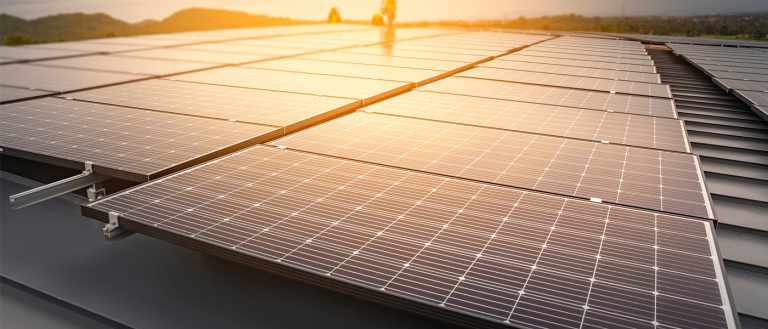U.S. Department of Energy initiative includes Case Western Reserve University-led project to test latest technology and publicly share results
A Case Western Reserve University-led team will test and analyze the latest solar energy technology. They will then publicly share the results, hoping it benefits the entire solar power industry and its customers.
The Case Western Reserve researchers will partner with scientists from the University of Central Florida and Arizona State University. They’ll work under a $6 million, 19-project U.S. Department of Energy (DOE) initiative. That project aims to “pursue innovative, targeted, early-stage ideas in solar energy research and development,” according to a DOE news release.
“Solar power is great, but only if the solar panel modules can be built to last and can generate electricity for 20 years and beyond with little maintenance,” said Laura Bruckman, associate professor of materials science and engineering at the Case School of Engineering and one of the project’s lead investigators. “This is a technology that is changing so fast that it’s hard for everyone to keep up with the best tech out there. That’s where we can contribute as an independent entity.”
Assessing the latest solar tech
Fellow Case Western Reserve researcher, Ina Martin, science director of the Materials for Opto/electronics Research and Education (MORE) Center, said the group will examine cells that convert light into electricity—called “photovoltaic” (PV)—before they are enclosed in solar panel modules. They hope to better understand how the cells contribute to the declining performance of those modules over time.
The researchers will study how the cells react to changes in humidity, temperature and other operational stressors, including interactions with the packaging.
A photovoltaic cell’s architecture is critical to both performance and lifetime, Bruckman said. When developers change the layer to make the cell perform better, it can affect the lifetime of the cell.
“If you pull back a bit, it’s helpful to know that this rapidly expanding industry is trying to make something as efficient–and cheaply–as possible,” Martin said. “We have a very diverse group of experts. They can combine their expertise to quickly probe what is working and what is not.”
Martin has expertise in thin films used in the cells. Bruckman excels in data science. Collaborators at the other universities bring expertise in solar cell fabrication and cell degradation modes.
Bruckman and Martin are also research members of the SDLE Center at Case Western Reserve. The center focuses on data science and analytics applied to materials and energy sciences. Researchers use accelerated laboratory and real-world, real-time tests to determine the efficiency and longevity of solar PV materials. They also test other long-life technologies, such as LED lighting and building materials.
The DOE project supports President Joe Biden’s goal to drive innovation and fight climate change. The goal: achieve carbon-free electricity by 2035 and net-zero emissions energy by 2050, the release said.
For more information, contact Mike Scott at mike.scott@case.edu.
This article was originally published July 27, 2022.


